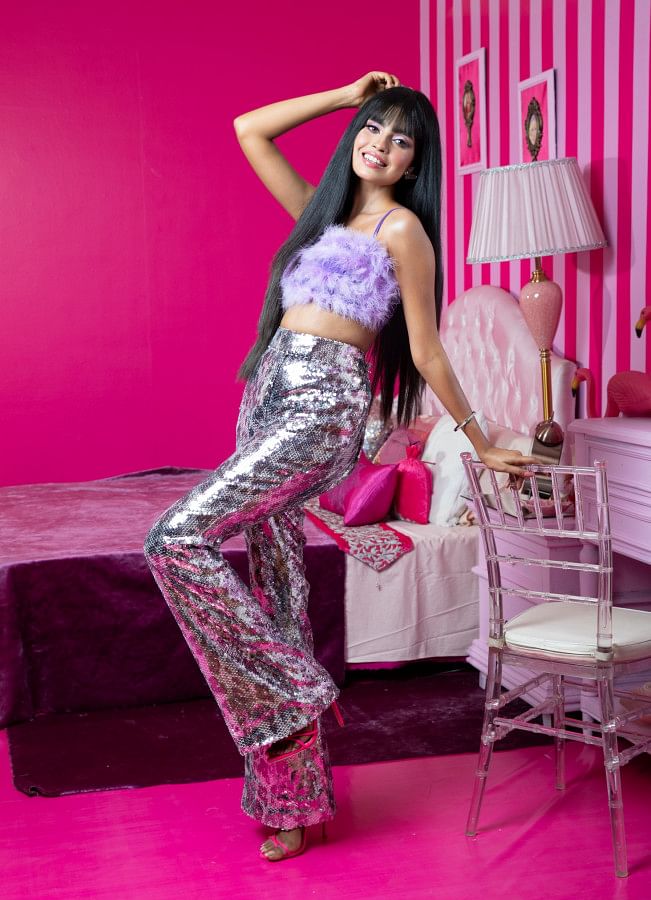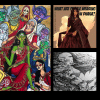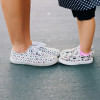Shaping the Barbie we know and love today
Barbie, the figurehead for Mattel toys, has enjoyed an almost monopolistic popularity ever since its creation in the late 50s. Embroiled in quite a few feminist discussions, the famous doll was criticised for its perfect body, Caucasian features, and unrealistic good looks. However, times have changed and with it, Barbie.
Called the Barbie Teen-age Fashion Model, the first ever Barbie doll appeared at the American Toy Fair in New York, in 1959. She wore a black and white bathing suit, matching heels, had the iconic made-up face and a chic ponytail.

With over a billion dolls sold throughout its life (and counting), Barbie continues to enjoy unchecked popularity among children around the world. However, despite its gorgeous looks, or rather because of it, Barbie has always been under the critical glare of the feminist eye. No other toy, in fact, has probably borne as much backlash because it was so perfect. As girls around the globe fell under the spell of Barbie, critiques could not help but worry about the future implications of such frenzied admiration. She was everything they wanted to be — she had the coveted hourglass figure, the long-lashed blue eyes, the pink cheeks and perfect, wavy hair. Little girls idolised her, older ones aspired to look like her. And that was where the problem lay.
In spite of the fact that Barbie was portrayed to be an ambitious girl, and was outfitted in a number of different attires ranging from cute, girl-next-door dresses to alluring beachwear, formal wear and even pinstriped pantsuits, to portray her various professions, her physical appearance continued to be unwaveringly and unrealistically perfect. Barbie was the quintessential fashion diva — but not necessarily a diverse one. Girls with dark skin were beginning to feel less than, as were those girls who did not have similarly enviable body shapes.
Addressing Colourism
It was not really until the 80s that the creators of Barbie realised the error of their ways and came out with the original African American Barbie doll and her love interest Ken. The doll couple had rich, warm complexions and textured hair, native to the region. The darker-complexioned Barbie lovers breathed a sigh of relief and the move ignited hopes of inclusivity among people of other races. Mattel did not disappoint and soon came out with a range of dolls to cater to the toy markets of the Hispanics and even the Asians.
These were significant steps in the right decision and Barbie was slowly but surely carving out a space for itself as a toy that did not discriminate against race or skin colour. Despite numerous efforts, Barbie's waistline continued to be eerily thin, which posed a problem for those advocating for body positivity.
Body Positive Barbies
The Barbie creators finally, after about 50 years into its life, addressed this issue in 2010, by introducing the "Fashionista Barbie"— a line of 23 dolls in various skin tones, hair types and textures. The line featured dolls who were curvy, petite, tall, or muscular, and sported afros, curls and braids. Between then and now, Mattel has shown support for cancer, Alopecia and Trichotillomania patients through a bald Barbie, hearing impaired persons through the American Sign Language Barbie, and even those people who had issues like greying hair and vitiligo. Nine years later, the line introduced a specially-abled doll in a wheelchair, expanding its inclusivity package to people with special needs. As recently as 2023, Mattel has brought out a doll to represent someone with Down Syndrome. This move was met with laudation and praise for the founding organisation, being the first toy company to include neurodivergent individuals and counter social stigma through role play and storytelling.

The movie and Barbie in the future
As the new Barbie movie makes waves across theatres around the world, the message is simple. This is not the Barbie of yesteryears where she had to look a certain way, fit a certain beauty standard and act a certain character. The world has evolved and Barbie has certainly kept up. Like any modern woman, the Barbie of today can be anything and everything she wants to be. She is a President, a Nobel laureate, a Supreme Court Justice, a lawyer, and so much more. She comes in varying skin tones, a variety of body types and with a range of different abilities.
The movie is nothing if not a multi-faceted ode to inclusivity and body positivity in a strongly marketed, go-getter avatar. It teaches girls to dream and dream big. It tells them that they shouldn't just aspire to look like the popular doll, but to step out of their comfort zones and soar to their potential. Barbie sprinkles a pink pinch of hope in an otherwise despairingly monochromatic world. She is back to rock the world – except, oddly, the world no longer feels plastic, just fantastic!
Model: Efa Tabassum
Styling: Soniya Yeasmin Isha
MUA: Sumon
Set Design: Eskay by Saimul Karim

 For all latest news, follow The Daily Star's Google News channel.
For all latest news, follow The Daily Star's Google News channel. 






Comments